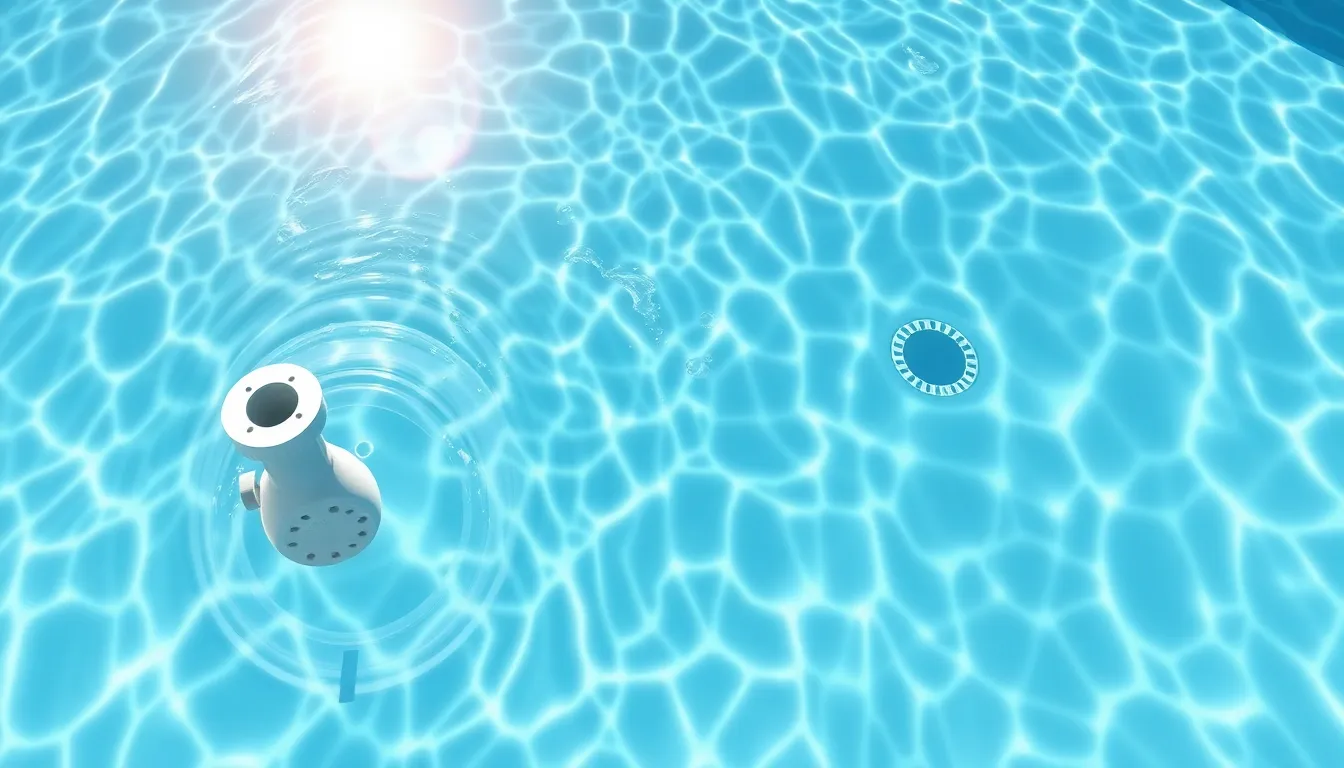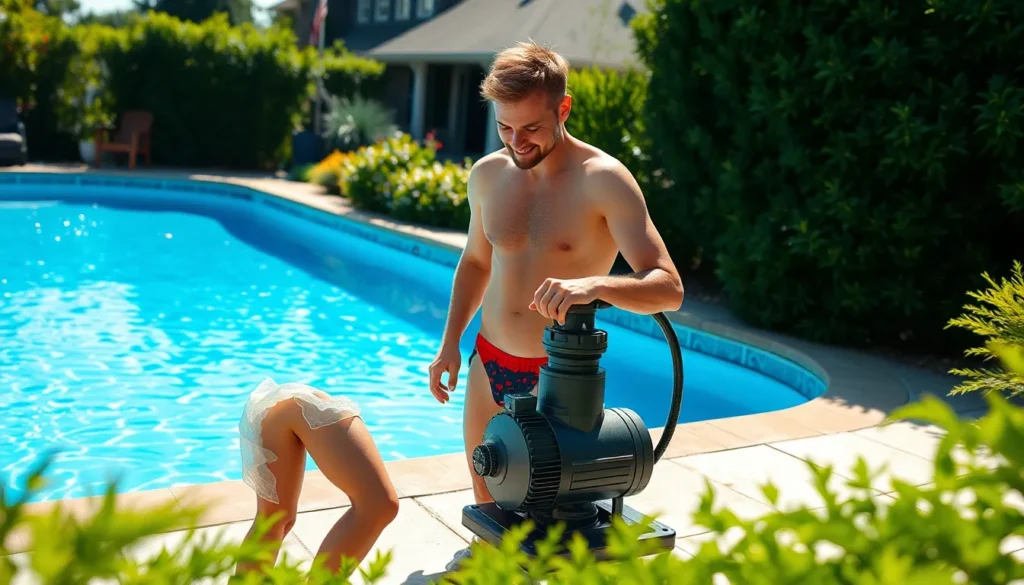Table of Contents
ToggleA sparkling pool is the ultimate backyard oasis, but without proper circulation, it could turn into a murky swamp faster than you can say “cannonball!” Regular pool circulation checks are crucial to keeping that water crystal clear and inviting. Think of it as a spa day for your pool—because who doesn’t want their pool to feel pampered?
Importance of Pool Circulation
Regular pool circulation checks play a vital role in maintaining a clean and inviting swimming environment. Proper circulation prevents water from becoming murky and supports overall pool health.
Benefits of Proper Circulation
Effective circulation ensures even distribution of chemicals throughout the pool. Consistent water movement promotes a more uniform temperature, enhancing comfort for swimmers. Regular checks also reduce the formation of sediment on the pool floor, making cleaning easier. Increased circulation aids in preventing algae growth, which can make water appear unattractive. Overall, prioritizing proper circulation leads to a healthier swimming experience.
Impact on Water Quality
Water quality significantly improves with adequate circulation. Proper movement prevents stagnation, which fosters an environment where contaminants thrive. Enhanced circulation filters out debris and impurities, keeping the water clear and safe. Maintaining optimal circulation levels reduces chlorine demand, making chemical management more efficient. When water circulates effectively, the pool reaches balanced pH levels, ensuring safer swimming conditions.
How Pool Circulation Works

Pool circulation involves the systematic movement of water to ensure cleanliness and safety. Proper circulation relies on several key components working together efficiently.
Components of a Circulation System
Pumps serve as the heart of the circulation system, driving water through various components. Filters remove debris, ensuring clarity and cleanliness of the pool water. Skimmers capture surface debris before it sinks, maintaining an inviting appearance. Returns help distribute chemically balanced water evenly throughout the pool, promoting uniform temperature. Additionally, main drains assist in circulating water from the pool bottom, preventing sediment buildup and enhancing overall hygiene.
The Circulation Process
Water enters the pool from various points, often through skimmers. It then passes through the pump which generates the necessary flow, moving water toward the filtration system. In the filtration system, impurities get trapped, allowing only clean water to return to the pool. Once filtered, water flows back into the pool through return jets, creating movement that aids in distributing chemicals evenly. Circulation operates continuously, preventing stagnation while promoting a comfortable swimming environment free of algae and contaminants.
Steps to Perform a Pool Circulation Check
Regular checks of the pool circulation system ensure water quality and cleanliness. Following these steps promotes an efficient circulation process.
Preparing the Equipment
Gather necessary tools for the check. A pressure gauge, a flow meter, and various cleaning supplies facilitate the equipment assessment. Ensure the water level is adequate for optimal circulation. Verify that the pump is operational and free of debris. Inspect the skimmer basket for blockages and clean or replace filters as needed. Cleaning surfaces helps maintain performance and improves water quality. Regular preparation enhances overall maintenance efforts and should take place before each circulation check.
Checking Flow Rates
Start by measuring flow rates at various points in the system. Use a flow meter to gauge the amount of water passing through the pump and filter. Record these numbers to identify abnormal flow conditions. Low flow rates often indicate blockages or equipment issues. Compare current measurements against manufacturer specifications. Adjustments may include cleaning filters or checking for pump malfunctions. Consistent checks of flow rates support proper chemical distribution, ensuring a clean swimming environment. Regular monitoring fosters a safe and enjoyable experience for swimmers.
Common Issues and Solutions
Routine circulation checks may uncover various issues affecting pool water quality. Identifying these problems early leads to timely solutions and improved overall maintenance.
Identifying Circulation Problems
Several indicators suggest circulation problems in a pool. Murky water often signals inadequate circulation, while surface debris and algae growth point toward stagnation. Unusually high levels of chlorine consumption indicate that the water isn’t circulating effectively. Additionally, if water lacks even temperature distribution, circulation issues may be present. Pressure gauge readings below the optimal range suggest that the pump isn’t functioning correctly. Regular monitoring of these signs ensures prompt identification of issues, fostering a clean swimming environment.
Troubleshooting Tips
Troubleshooting circulation problems involves systematic steps. First, check the pump operation, ensuring it runs smoothly without unusual sounds. Next, inspect the filter for clogs, as dirt buildup hinders necessary water flow. Examine skimmers and return jets for blockages, as debris often accumulates in these areas. Analyzing the pressure gauge reading is crucial; readings that are too low may indicate an underlying issue. Cleaning or replacing filtration components can yield better circulation. Consistent monitoring and maintenance can help maintain optimal water quality and prevent future concerns.
Maintenance Practices for Optimal Circulation
Regular maintenance is essential for ensuring effective pool circulation and water quality. Following established practices can greatly enhance pool cleanliness and swimmer comfort.
Regular Cleaning Routines
Implementing a consistent cleaning schedule keeps the pool environment safe and inviting. Skimmers must be emptied regularly to remove surface debris. Additionally, brushing the pool walls and floor aids in preventing algae buildup. Filters should receive thorough inspections and cleaning according to the manufacturer’s guidelines. Maintaining equipment in good condition promotes proper flow and circulation, minimizing potential blockages. Monitoring water levels also contributes to optimal performance, ensuring that the circulation system operates effectively.
Monitoring and Adjusting Equipment
Checking the performance of pumps and filters is crucial in maintaining pool circulation. Daily monitoring of pressure gauges can indicate clogging or malfunctions. Regularly assessing flow rates at different points in the system helps identify issues early. Adjusting settings on variable-speed pumps optimizes energy use while maintaining adequate circulation. Addressing any irregularities promptly minimizes negative impacts on water quality. Keeping an eye on equipment performance leads to an efficient circulation system and a safer swimming environment.
Regular pool circulation checks are essential for maintaining a pristine swimming environment. By ensuring effective water movement pool owners can enjoy clearer water and reduced algae growth. Consistent monitoring not only enhances water quality but also simplifies maintenance tasks.
Implementing a routine check can identify potential issues early and promote efficient chemical distribution. This proactive approach leads to a safer and more enjoyable swimming experience. By prioritizing circulation maintenance pool owners set the stage for a refreshing oasis that’s inviting for everyone.




